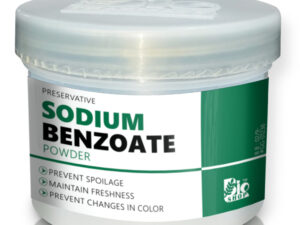Description
Phthalates: Understanding the Ubiquitous Plasticizers and Their Potential Impacts
Phthalates. The name itself might not ring a bell, but these chemicals are likely present in many products you use every day. From the soft plastic toys your child plays with to the seemingly innocuous fragrance you spritz each morning, phthalates, like Dibutyl phthalate (DBP), are pervasive in our modern world. Understanding what they are, where they’re found, and their potential health effects is crucial for making informed choices about the products we bring into our homes.
What are Phthalates?
Phthalates are a group of chemical compounds primarily used as plasticizers. This means they’re added to plastics, particularly polyvinyl chloride (PVC), to make them more flexible, durable, and resilient. Without phthalates, many plastic products would be brittle and prone to cracking.
Dibutyl phthalate (DBP) is just one member of this extensive family. While some phthalates are phased out due to health concerns, DBP remains in use in certain applications, although its usage is increasingly restricted.
Where Are Phthalates Found?
Given their plasticizing properties, phthalates are widespread in a variety of products. Common sources include:
- Personal Care Products: This is a significant area of concern. DBP, for example, can be found in nail polish (as a solvent and plasticizer), hair sprays, perfumes, and lotions. It’s important to note that companies are not always required to list phthalates as ingredients, especially when used in fragrances.
- Vinyl Flooring and Wall Coverings: Phthalates contribute to the flexibility and durability of these building materials.
- Toys: While many countries have banned phthalates in children’s toys, especially those designed for young children who might mouth them, the presence of these chemicals remains a concern, particularly with imported or older products.
- Medical Devices: Certain medical tubing and blood bags can contain phthalates to ensure flexibility and prevent cracking.
- Adhesives and Lubricants: These industrial applications often utilize phthalates for their plasticizing properties.
- Food Packaging: Although their direct use in food contact materials is regulated, phthalates can sometimes migrate from packaging into the food itself.
Why the Concern? Potential Health Impacts
The concern surrounding phthalates stems from their potential to disrupt the endocrine system. The endocrine system is a network of glands that produce hormones, which regulate vital bodily functions like growth, development, reproduction, and metabolism. Phthalates, as endocrine disruptors, can mimic or interfere with these natural hormones, potentially leading to a range of health problems.
Research has linked phthalate exposure to:
- Reproductive and Developmental Issues: Studies have associated high phthalate exposure with decreased sperm quality, altered male genital development, and premature breast development in girls.
- Respiratory Problems: Asthma and allergies have been linked to phthalate exposure, particularly in children.
- Metabolic Disorders: Some research suggests a connection between phthalate exposure and increased risk of obesity and type 2 diabetes.
- Cancer: While the evidence is still evolving, some studies have indicated a potential link between certain phthalates and an increased risk of specific cancers.
Reducing Your Exposure to Phthalates
While completely avoiding phthalates can be challenging, there are steps you can take to minimize your and your family’s exposure:
- Read Labels Carefully: Look for products labeled “phthalate-free” or “DBP-free.” Be wary of products listing “fragrance” as an ingredient, as this can mask the presence of phthalates.
- Choose Natural Alternatives: Opt for natural personal care products, cleaning supplies, and building materials whenever possible.
- Avoid PVC Plastics: Look for alternatives to PVC plastics, especially in toys and food storage containers. Choose products made from safer plastics like polyethylene (PE) or polypropylene (PP).
- Eat Fresh, Unprocessed Foods: Reduce your consumption of packaged and processed foods, which can be a source of phthalate exposure.
- Dust and Vacuum Regularly: Phthalates can accumulate in dust, so regular cleaning is essential.
- Choose Certified Products: Look for certifications like “GREENGUARD Gold” that indicate products have been tested for low chemical emissions.
The Future of Phthalate Regulation
The awareness of the potential health risks associated with phthalates is growing, leading to stricter regulations in many countries. The European Union and the United States, for example, have implemented bans or restrictions on the use of certain phthalates in toys, childcare articles, and cosmetics.
Continued research and stricter regulations are essential to protect public health from the potential adverse effects of these ubiquitous chemicals. By understanding the sources of phthalates and taking proactive steps to reduce our exposure, we can create a healthier environment for ourselves and future generations.















Reviews
There are no reviews yet.